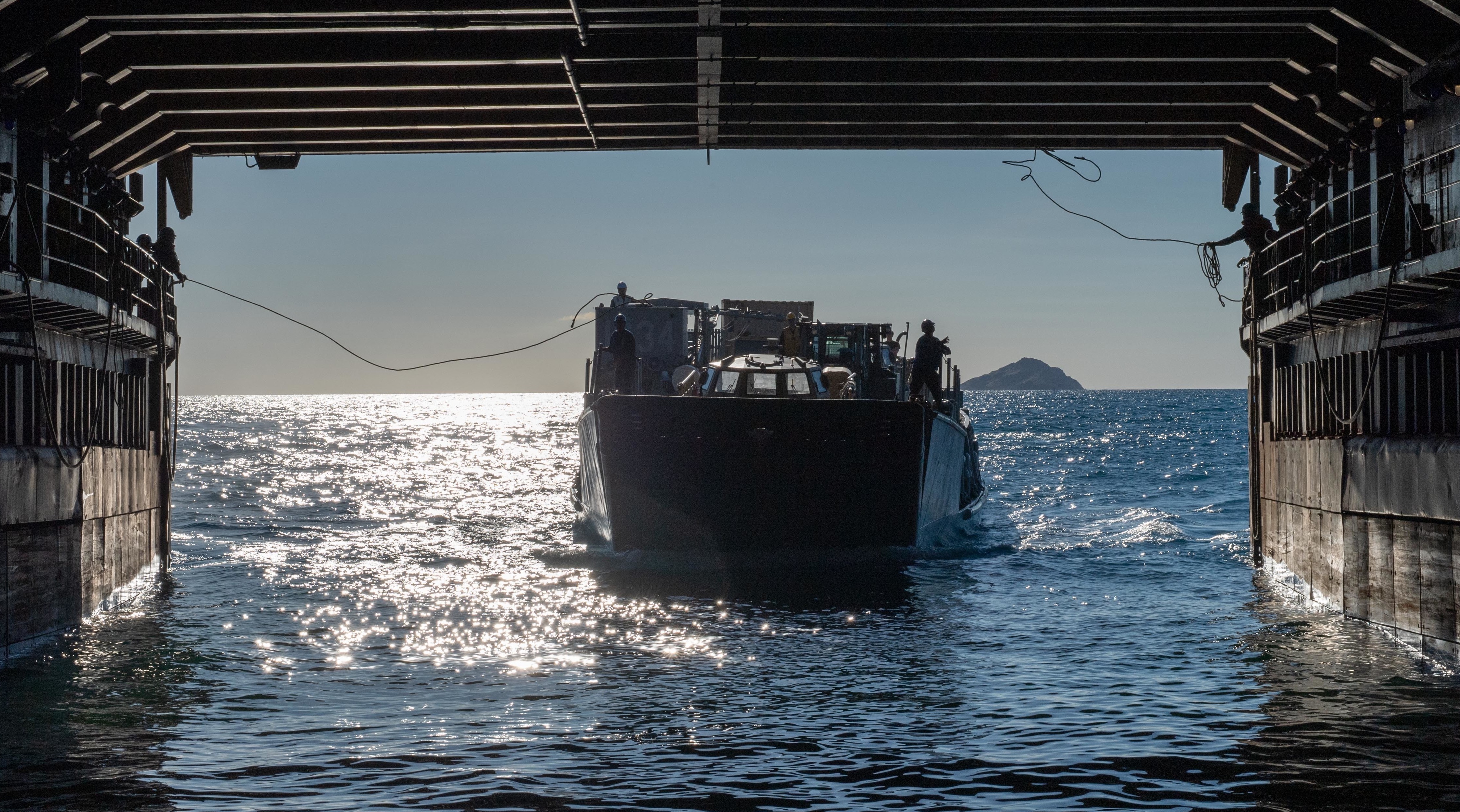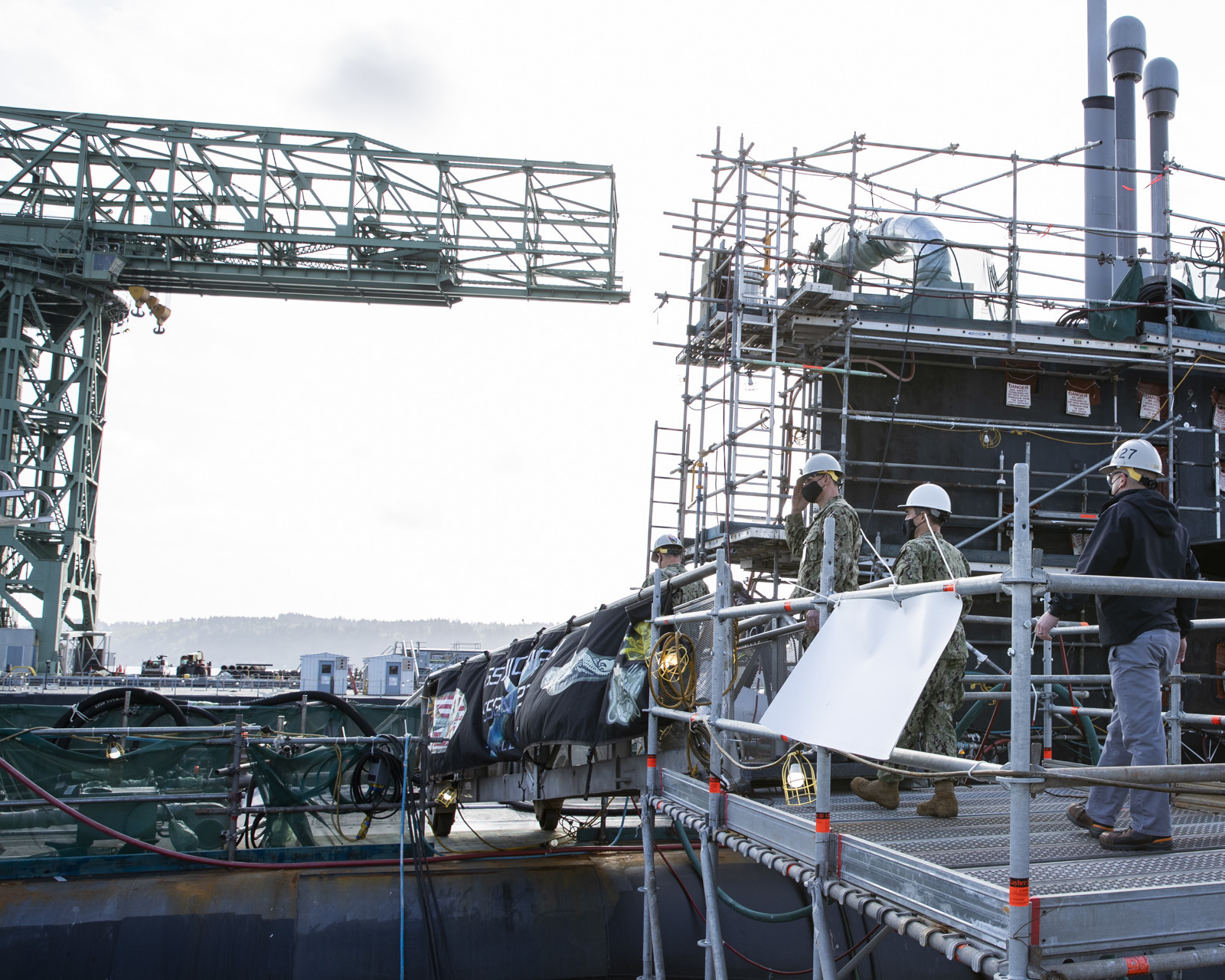
The Navy next week will host an open-source table-top wargame to experiment with how climate change could affect a future conflict, a service official said today.
The half-day exercise will feature individuals from Capitol Hill, the Defense Department, the defense industry, think tanks and academia, Navy assistant secretary for energy, installations and environment Meredith Berger told reporters during a Defense Writers Group breakfast.
The purpose of the June 29 exercise is “to come together and really think about and experience what it means to operate in a climate-impacted environment,” Berger said.
“We’re going to create the right level of stress in a very responsible way to see that it is hard to make these choices and there [are] unanticipated consequences and there’re costs and impacts and all sorts of intervening circumstances that we need to think about from each other’s perspectives,” she added.
The exercise comes about a month after the Navy unveiled its climate strategy, known as Climate Action 2030, aimed at cutting the Department of Navy’s greenhouse gas emissions.
In a 2015 preview of the potential operating environment between 2030 and 2045, the Marine Corps repeatedly identified climate change as an evolving factor as it assesses the global security situation.
“By 2030, poorer nations and poorer populations are most adversely affected and lease able to cope with the worst effects of climate change. Migrations increase in frequency and scale as the poor move toward the urban littorals,” the document reads. “Influxes of people of difference religions, ethnicities, tribes, and family and belief systems create new tensions. Moreover, increasing migration begins to overburden social welfare infrastructure in places already struggling to cope with societal issues.”

Berger, who is also now the Navy’s chief sustainability officer, said her role includes working with the Navy’s assistant secretary for research, development and acquisition on how to incorporate climate efficiency into requirements for new platforms. She pointed to an April memo from Deputy Defense Secretary Kathleen Hicks that called for the Defense Department to make energy efficiency a priority when developing new acquisition programs or updating old ones.
“That’s a place where the [Navy aquistions] portfolio will be focused on that and it’s a place where we have a partnership so I can take what we’re talking about as a department from a climate perspective, from [a] chief sustainability officer perspective, and make sure that there are some … opportunities to drive that focus, make sure that we are meeting or exceeding those objectives, and signaling to the market that this is a direction that we are going,” Berger said. “The department is a big market driver and this is an opportunity to signal what our requirements are so that we are meeting those climate objectives.”
Each military service now has a chief sustainability officer in an effort to follow President Joe Biden’s executive order on sustainability, Berger said. That position is held by each service’s civilian head for energy, installations and environment.
“As we work together to execute that is the opportunity to make sure that we’re meeting objectives like … research, development and acquisition, making sure that we’re putting in those requirements and signaling what it means,” she said. “It’s also a lot of things that traditionally fall under the climate portfolio, as I’ll call it, so making sure that we have resilient-built infrastructure both in the cyber defense and in the climate defense realms, and making sure that we have a department-wide approach to what it means to incorporate that resilience, that sustainability, in everything that we are doing.”
As for ways the Navy could make its ships more sustainable, Berger pointed to a type of paint the service could use to address salt-water intrusion and LED lighting.
The Shipyard Infrastructure Optimization Plan (SIOP), a multi-billion dollar effort to overhaul the Navy’s public yards, is a chance for the service to make its infrastructure more sustainable.

“SIOP is an opportunity for us to make sure that we are taking every opportunity to increase and include energy efficiency, climate resilience. So this is a place where we are, as I mentioned, building to higher flood plains,” she said.
The equipment that shipyards workers use is another avenue where the Navy could pursue more sustainable options.
“Electrification of some of the tools that are there, so things like forklifts, cranes, other heavy-lift type things – there’s an opportunity for electrification there that we are looking at. Similarly, there are innovations such as cooling pavement and other things that are going to reduce heat in some places that we’re really seeing the impact of heat, especially on workers and on health,” Berger said.
“And the Pacific Northwest is coming up as a SIOP project. And so these are some examples of where we’ll have the opportunity to anticipate what is coming, make sure that we are putting in our best thinking and solutions in terms of how to be more energy efficient, climate-cognizant and create overall the best investment that we can.”





